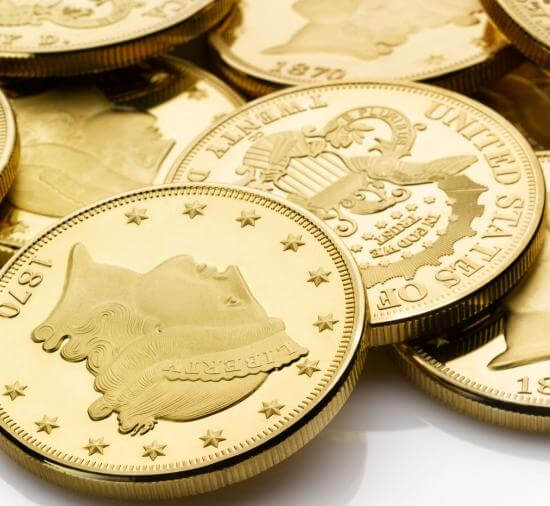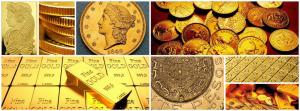Collectible Precious Metal Coins
What distinguishes collectible precious metal coins from ‘regular’ bullion coins? That question is not as easy to answer as it may at first seem since there are several different factors to consider. In simple terms, it is scarcity that makes a coin collectible and distinguishes it from more abundant brilliant uncirculated bullion coins. Such relative scarcity can be achieved in a variety of ways. This article will take a look at mintage numbers/limits, coin finishes, mint and/or privy marks, special features such as gilding or coloring and IRS classifications.
The first typical distinction of collectible precious metal coins is that they have maximum mintage numbers in place whereas ‘regular’ bullion coins are typically minted in large quantities according to the current market demand without strict mintage limits. However, some types and/or sizes of brilliant uncirculated bullion coins have maximum mintage numbers in place as well so this distinction does not always apply.
Whereas British Gold Britannias for example are always minted according to the current market demand, other gold bullion coins like for example the Perth Mint‘s Australian Gold Lunar coins have a strict mintage limit of 30,000 in place for the 1 oz denomination. If mintage limits are in place for all denominations of a certain type of coin, then they will usually be highest for 1 oz coins. As a general rule it can be stated that the larger the size/denomination of a certain bullion coin, the lower will be the mintage limit for that size/denomination.
However, mintage limits for brilliant uncirculated coins are more the exception than the rule. For proof coins it is exactly the opposite situation. Mintage of proof coins is almost always capped and that artificial scarcity makes it possible for mints to charge much higher premiums for the proof version of their bullion coins. For that reason, it is not allowed to include the proof version of most precious metal bullion coins in an IRA since the IRS classifies them as collectible precious metal coins. Nevertheless, the IRS does not consider all proof coins to be collectible coins. Proof American Gold Eagles are specifically allowed to be included in precious metal IRA’s but that is because the mintage limits for proof Gold Eagles are quite high and comparable to that of bullion coins.

Determining whether a certain gold coin falls into the category of collectible precious metal coins is not always so easy
It can also be a special mint mark or privy mark that makes a bullion coin fall into the category of collectible precious metal coins. That is not always the case though. The Chinese Gold Pandas and Silver Panda coins that are issued for 2022 can not be considered as collectibles for example since all of them bear a special privy mark. It is therefore not the mint mark or privy mark that makes a precious metal coin collectible but the rarity or exclusivity.
The Royal Mint for example every year issues a limited mintage of British Gold Britannia and Silver Britannia coins that have a special privy mark along the rim. Since these coins are just a tiny fraction of all Britannia coins that are minted each year, they fall into the category of collectible coins. That rarity factor is of course also what makes these coins sell for much higher premiums than the regular bullion version.
Gilding and coloring are two popular ways of coin modification that can turn a ‘regular’ bullion coin into a collectible coin. Many renowned government mints like the Perth Mint offer a limited mintage of their bullion coins with selective gilding (gold-plating) applied to the coin’s design elements. That makes these coins also fall into the category of collectible precious metal coins. That principle holds true even when the gilding or coloring is applied by an external company and not the mint itself.
The colored Chinese Gold Panda and Silver Panda coins that exist in strictly limited numbers on the market for example are standard bullion coins that have had their coloring applied by a private mint dealer in Germany. That act by an external company upgrades the coins in the eyes of collectors and coins that are considered as collectible are then not allowed to be included in a precious metal IRA (even though the coins would be allowed to be included in their unmodified and original state).
How the IRS categorizes collectible precious metal coins
In fact, the IRS technically classifies all coins to fall into the collectible category. However, it then also makes the distinction to specifically exclude certain types of coins from that classification. One factor that the IRS considers when making the classification whether a certain coin is collectible or not is the purity of the precious metal that it is made of.
Gold bullion coins need to be at least 99.5% pure to be legally included in an IRA. That would technically exclude the 91.67% pure American Gold Eagles so the IRS has specifically made an exception for these coins. The South African Gold Krugerrand coins which are 91.67% pure as well are however not allowed to be included in a precious metals IRA.
In order to not be classified as collectible precious metal coins, silver bullion coins need to be at least 99.9% pure and the minimum purity standard for both platinum and palladium bullion coins is 99.95%. One interesting case are the British Silver Britannia coins. Even though these 99.9% pure silver coins are minted without a mintage limit according to the current market demand each year, they are classified as collectible precious metal coins by the IRS and are therefore prohibited to be included in a precious metal IRA. The reason for this exclusion is that when this coin series was launched, the coins were ‘only’ minted out of 95.8% fine silver and with maximum mintage limits in place.
With all these exceptions, how can an inexperienced precious metal investor tell whether a certain coin falls into the collectible category or not? In my opinion, the easiest way to tell is to look at the premium above the spot price of the metal that it would cost to buy that coin. Regular bullion coins can normally be purchased for premiums in the range of 4 – 7% above the spot price. When buying collectible precious metal coins on the other hand, you will have to pay premiums far above that, often in the range of 15 – 25% above the spot price.


